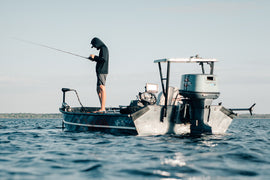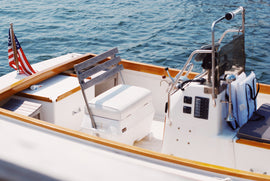With dozens of national historic landmarks, Florida has something for everyone — whether you want an action-packed adventure, educational outing, or relaxing vacation experience. But to get the most out of your Florida trip, you must check out (and respect) its unique natural environment. And the best way to do that is to visit the national parks in Florida.
The National Park Service manages 11 sites in the state, including three official National Parks. These are the top spots to visit if you plan a trip to the Sunshine State.
1. Biscayne National Park
Not far from Miami, Biscayne National Park feels worlds away from the buzzing city. The stunning waters, islands, and coral reefs offer opportunities to fish, boat, walk, and take in some fascinating history.
Humans have fished in Biscayne Bay for thousands of years-literally. Human remains and artifacts dating back 11,000 years have been found in the area. So, of course, you can still fish in the national park as long as you have a valid Florida fishing license. Visit the official site for a full list of regulations.
If you're limited on time, these are the must-see places in Biscayne National Park:
- Jones Lagoon: Jones Lagoon comprises Totten Key and Porgy Key and is 0n the National Register of Historic Places. The peaceful waters of Jones Lagoon are prime for kayaking or jumping on a SUP. While on the water, you might see fish, sea turtles, and sharks swimming.
- Boca Chita Key: Only reachable by boat, Boca Chita Key is a visitor favorite featuring a 1930s lighthouse, a half-mile trail with views of Sands Key, a small beach with a picnic area, and campsites.
- Maritime Heritage Trail: This unique series of six shipwrecks is searchable by scuba diving or snorkeling. Beyond the sunken ships, you'll see a variety of fish and coral while swimming through.
- Elliott Key: The largest island in Biscayne National Park, Elliott Key features the seven-mile Spite Highway (with an interesting backstory). The island features a one-mile loop trail, campgrounds, and great fishing spots.
2. Everglades National Park
This is the one you've heard of. The park protects the southern fifth of the Everglades, the largest subtropical wilderness in the U.S.This protected portion of Florida provides habitat for several endangered species such as the manatee, crocodile, and panther.
Everglades National Park offers plenty of trails and activities, plus the chance to see some unique wildlife. Here's where to head:
- Shark Valley: Get started at the Shark Valley Visitor Center, then head out on the two-hour Shark Valley Tram ride. A guide will take you through 15 miles of Everglades National Park to a scenic overlook. You can take this same ride via bicycle — bring your own or rent one when you arrive! You can also opt for a bike ride with a National Park Ranger or enjoy a meteor shower ride. Cyclists also enjoy riding along the Shark Valley Slough for its incredible views.
- Anhinga Trail: This popular trail begins at the Royal Palm Visitor Center and is less than a mile round trip of paved walkways and boardwalks, but you can expect to see a variety of wildlife along the way — including alligators!
- Ten Thousand Islands: Explore this well-known yet lightly visited area, featuring a maze of mangroves and some stellar coastal scenery. Boat tours are available through this area, but it's even better to kayak there yourself! Rentals are available if you can't bring your own, and you'll have the chance to spot dolphins, manatees, and alligators.
- Flamingo by Main Park Road: This single road in Everglades National Park runs the entire length, providing you with plenty of sights along the way. You can hit the aforementioned Anhinga Trail, stop at the Pa-hay-okee Overlook, see a variety of birds — possibly even a flamingo — surrounding several ponds, and end your day at the marina in Flamingo. Here you'll likely see some manatees and crocodiles!
3. Dry Tortugas National Park
The Dry Tortugas National Park is nearly 70 miles from Key West, reachable only by boat or seaplane. The remote park covers 100 square miles of mainly water with seven small islands. It's best known for its beautiful blue waters, incredible coral reefs, and variety of bird and marine life. These are the places you should see first:
- Fort Jefferson: Built in the 1800s, Fort Jefferson is the largest masonry structure in the Northern Hemisphere, and you can learn about the site's exciting history via a guided tour.
- Garden Key: The most accessible area for scuba diving or snorkeling in Dry Tortugas National Park, Garden Key offers four separate sites that are excellent for these activities: Moat Wall, South Coaling Dock Ruins, North Coaling Dock Ruins, and West of Garden Key.
- Bush Key: Walk Bush Key's one-mile loop along the aqua waters, with great views of Fort Jefferson and the other islands. Be sure to check with the National Park Service before you go, though — Bush Key is closed for a portion of the year as a bird nesting site.
- Loggerhead Key: The largest island in Dry Tortugas National Park, Loggerhead Key is only accessible by boat or kayak. This makes for wide-open beaches you can enjoy with little company. You can also scuba dive or snorkel at the Little Africa Reef or Windjammer Wreck.



